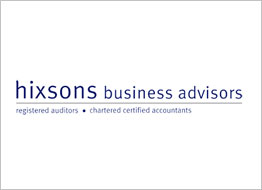Two issues are very common to small and medium-sized businesses. Everybody suffers from a lack of resource, and most people worry that their business is under some sort of threat, either externally or internally – and they are generally right, to some extent.
Doing it on the cheap
Particularly post recession, there is very little extra resource available. All the cuts have been made, and all the expenses saved, and the business is running as lean as possible. That’s quite understandable, and desirable. But if you want to do something new or different, you have a problem because you don’t have spare resource to do it. Quite often you just try and fit it in – using whatever you can which results in a solution that gets cobbled up and doesn’t quite work as it should. It’s all very well and good as long as the result is effective. Doing it on the cheap can be as wasteful as hiring expensive consultants, if you don’t get the result that you need. Unfortunately, the cheap solution is seemingly the default position.
There’s an old saying – if a job’s worth doing, it’s worth doing well. That means putting enough resource into it to make it work. If that means you have to hire someone in who is an expert in that field, they can quite often be faster and more effective then you can. You need to open your mind and consider the best way of getting the job done, and not just try and do it the cheapest way. That may end up costing you more in the end.
Fear
Business owners worry about everything, including competitors stealing their market, customers leaving, staff leaving, even staff leaving and taking their customers! These are all natural worries. But you cannot let fear rule your business life in the same way that you cannot let it rule your personal life.
You have to have some mechanism for dealing with these risks. And a fear is simply an unquantified or un-managed risk. We have risk analysis tools which we run for our clients, which don’t simply deal with someone tripping over a loose piece of electrical wiring, or falling off a roof, but deal with just these sorts of business issues. We then find ways of managing, mitigating, or eliminating those risks. Clients find this very empowering.
It’s worthwhile to simply make a list of what is worrying you, and then decide what can be managed, mitigated or eliminated. Sometimes unfortunately those plans have to be invoked, such as the time when a director suddenly died at one of our clients. But at least there was a plan, and although the next six months were difficult, sales and profitability were maintained, and the business has since gone on to prosper.
The single biggest fear seems to be staff leaving and going to competitors or starting up on their own, and taking customers. If members of your staff are that unhappy and unfulfilled in their job, then perhaps you should be asking yourself why? What could you do to change that? How can you get them to believe in the business and see what you are trying to achieve? How will you reward them (not just in salary terms) so that they feel fulfilled and will help you rather than hinder the business by leaving? We’ve touched on this in earlier pieces.
Whatever your fears, list them, and then rank them on a Risks Scorecard – a 10 x 10 grid (10 is high) where one axis is financial impact, and the other axis is likelihood. Fears – risks, which is what these are – are a function of these two measures. If it is severe impact (someone falling off a roof) but unlikely, you might still want to put up a guardrail. Most people only think of the impact, not the likelihood. Just thinking of the impact (severity) can make the fear more important and more real than it actually is. Once these fears are plotted on the grid, and you consider what you can mitigate, manage or eliminate, you are going a long way towards allaying your fears.
